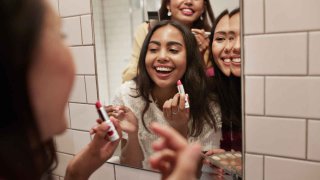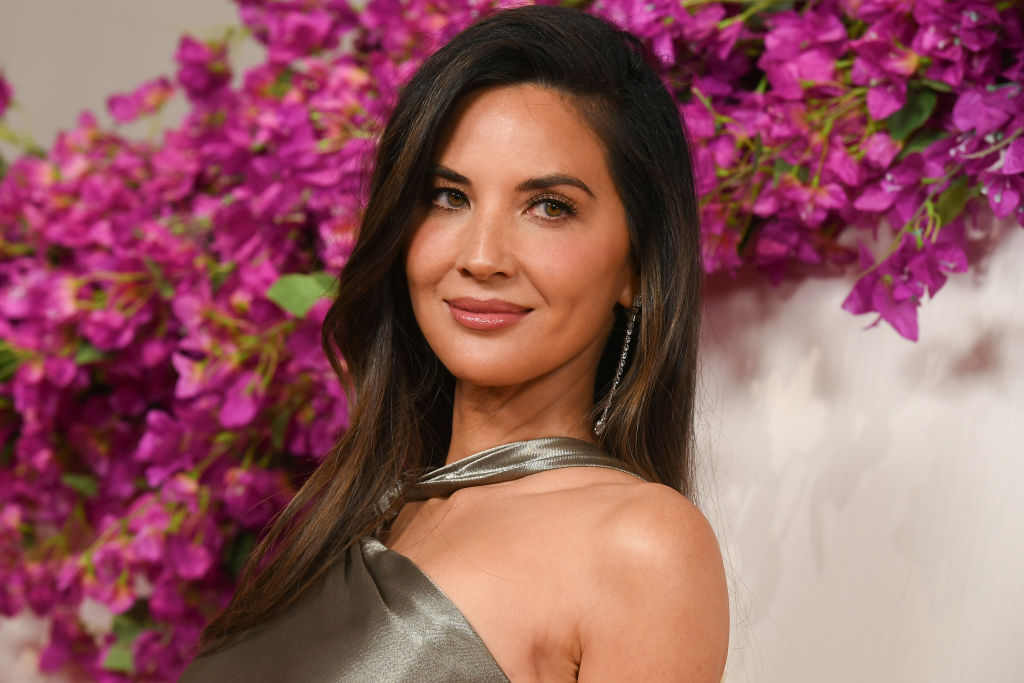
A “get ready with me” video is exactly what it sounds like.
Creators walk viewers through the process of getting ready for an event, running through styling their hair, applying makeup, picking outfits and even brushing their teeth. As for what they’re getting ready for? Could be anything. Really. A night out, first-ever dates, the gym, a trip to the hospital for a blood test, period piece cosplay, pretending to go to Coachella, a day of high school during Ramadan.
The genre is popular among celebrities, too: Kylie Jenner, Hailey Bieber, Lizzo and more show fans a sliver of their routines.
Get Philly local news, weather forecasts, sports and entertainment stories to your inbox. Sign up for NBC Philadelphia newsletters.
This concept isn't revolutionary. "Get ready with me" (often abbreviated GRWM) videos are almost as old as social media itself. Longer GRWM videos, featuring makeup and hair tutorials, were popular on YouTube back in the 2000s and 2010s. They eventually became mainstream, with publishers like Vogue jumping on the bandwagon and bringing celebrities like Emily Ratajkowski and Jennifer Lopez into the mix.
But it’s TikTok that landed GRWM videos onto everyone’s For You pages, giving us all a closer look at people’s bedrooms, bathrooms and style choices. To date, the hashtag #GRWM has amassed more than 99 billion views.
They may look like they’re about makeup, but 'get ready with me' video are about stories
Entertainment News
Early on, “get ready with me” videos were strictly educational. But on TikTok, influencers don’t have to be experts. Sure, creators can explain the products and techniques they're using but more and more, their currency is charm, not expertise.
Since the maximum video length on TikTok is only three minutes, there’s not enough time for creators to break down the specifics of a face of makeup. As a result, they keep things casual.
Alix Earle, 22, is perhaps the queen of the GWRM format. Earle pairs stories from her life with night-out prep. She’s reeled in over 5 million followers on the app and more than 368 million likes across her videos. Her honesty is part of what has pioneered the genre’s tilt toward confessional: She’s opened up about her struggles with acne, breast augmentation and more, all while applying makeup.
Shelby Bell, 25, began posting content in 2020 during the pandemic. Her account exemplifies the video format's signature blend of service and storytelling. She tells stories about her life as a makeup artist ... while giving makeup artist-approved suggestions.
“I kind of look at it like I’m on FaceTime with my best friend, and we’re just having a chit chat before going out to dinner or before I’m headed out to go to an event,” Bell tells TODAY.com.
Influencer marketer Amanda, the founder of @letstalkpopculture on TikTok, says the genre’s shift from getting ready to telling stories while getting ready has become a way for creators to bond with their audiences.
“Creators figured out that in order to create an engaged audience, you need to interact with them,” Amanda tells TODAY.com.
From experience, Bell knows the key to engagement is a personable opening. She wants people to stick around — and knows that isn’t going to happen through a perfect cat eye, but through an opening line.
“You still have to say something that’s gonna catch my attention within the first few seconds, but I’m going to stick around and hang out for a longer period of time,” Bell adds.
Why people can’t get enough of GRWM videos
Why are these videos everywhere? Well, because people are watching them, which fuels the algorithm to serve more of them — and so the cycle continues.
Ally Lipschitz, 18, ends almost every night watching GRWM videos.
“I just find them so aesthetically pleasing,” Lipschitz tells TODAY.com. “Even if I’m laying in my bed at 11:00 p.m. at night, I will watch them getting ready for their day at 10 a.m.”
Isabel Segel, 16, is drawn to the sounds that populate the videos. “The clicking of the makeup caps, their bracelets clinking,” she says, describing ASMR (autonomous sensory meridian response), a tingling sensation triggered by specific sights or sounds that has spurned a GRWM subgenre of its own.
Dr. Rachel Larrain Montoni, a psychologist who specializes in women’s mental health, thinks the connection formed between viewer and creator during GRWM videos is particularly strong because typically, they're intimate and unvarnished.
“There is something connecting about (these videos), something relatable about them, that we don’t necessarily find or get or receive in other parts of social media,” Montoni says. “Some of the content on social media that’s a bit more curated may feel very, very out of reach.”
Essentially, seeing a stranger in their pajamas or washing their bare face helps them feel more like a close friend.
“When somebody is putting their makeup on or getting their outfit together and getting ready, it creates or fosters an intimacy that doesn’t necessarily exist if you’re looking at somebody who is already made-up,” she continues.
There’s an economics to these videos. Intimacy builds trust — which leads to brand deals for creators. Both Segel and Lipschitz have bought products through GRWM videos, saying they’re more influenced by these videos than they are by traditional advertisements.
“You get to see this product actually being used in an everyday context,” Segal says.
Authenticity sells. Amanda says when her company looks for influencers to work with, they look for personality over polish.
“I know a lot of people expect brands to work with, like, those picture perfect influencers, but that’s really not what moves the needle from a brand perspective,” she says.



